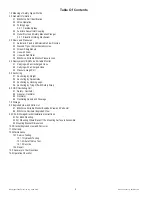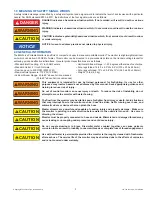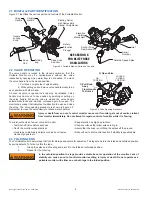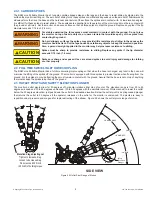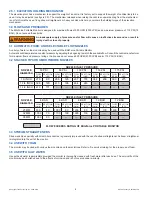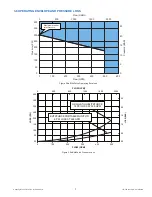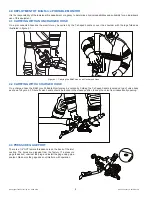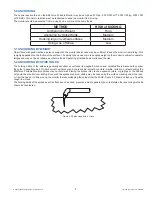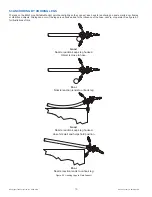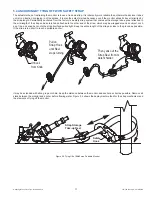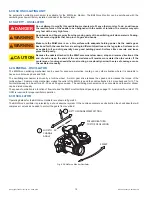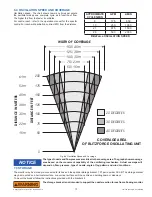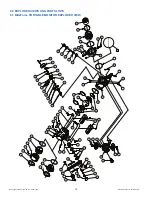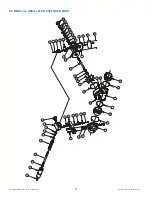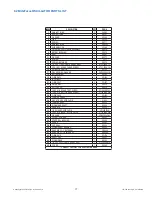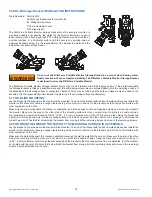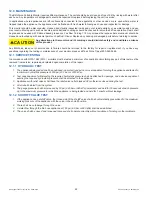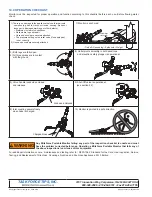
©Copyright Task Force Tips, Inc. 2006-2018
LIX-730 January 8, 2018 Rev08
9
5.0 ANCHORING
The nozzle reaction force on the BlitzForce Portable Monitor may be as high as 330 lbs - 500 GPM at 175 PSI (150 kg- 2000 LPM
at 12 BAR). This nozzle reaction must be restrained to keep the monitor from moving.
The monitor should be anchored from moving by one or more of these methods:
METHOD
RISK of MOVING
Anchoring by Weight
High
Anchoring by Spike Holds
Medium
Hooking legs on vertical surfaces
Medium
Using a tie off strap
Low
5.1 ANCHORING BY WEIGHT
On surfaces with good traction a person’s weight on the monitor and/or hose may be suffi cient to keep the monitor from sliding. This
is highly dependant on the friction of the surface. The ability to keep one or more people’s weight on the monitor is subject to operator
fatigue and may not be as reliable as other methods. Operating at limited fl ows will reduce the risk.
5.2 ANCHORING BY SPIKE HOLDS
The holding ability of the spikes is generally excellent on surfaces like asphalt, wooden and carpeted fl oors because they allow
the spike to penetrate well. On hard smooth surfaces such as ceramic tile, smooth concrete, marble, terrazzo, or steel decking the
BlitzForce Portable Monitor’s spikes may not hold well. Placing the spikes into cracks, expansion joints, or gratings or the like will
help hold the monitor from sliding. Even with the spikes anchored, sliding may be caused by the surface cracking under the load,
or from the hose or nozzle moving the monitor thereby dislodging the spikes from their hold. Figure 5.2 shows a close up of a spike
caught in a crack.
The holding ability of the spikes on soft surfaces such as sand, gravel and mud is generally poor, therefore other anchoring methods
should be considered.
Figure 5.2 Spike Caught in a Crack


